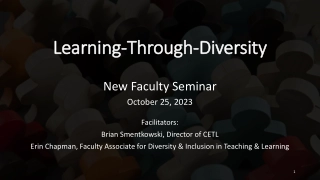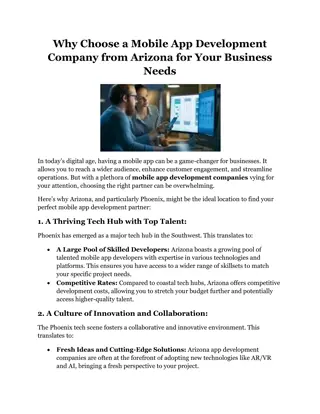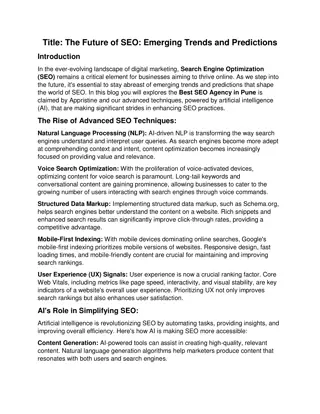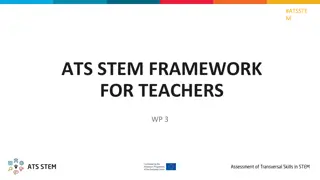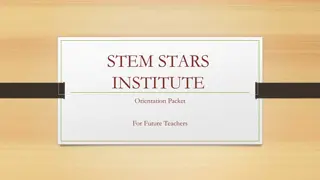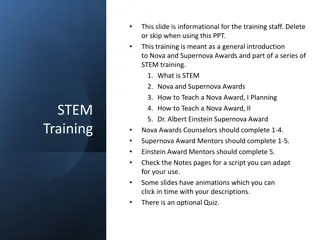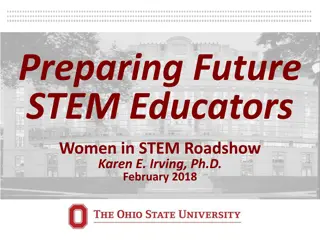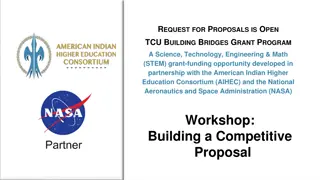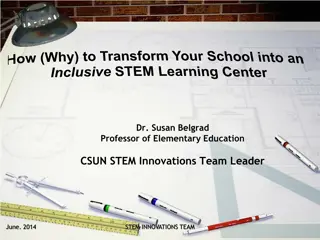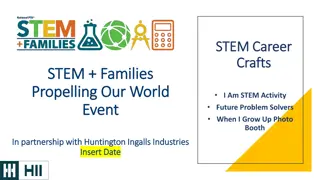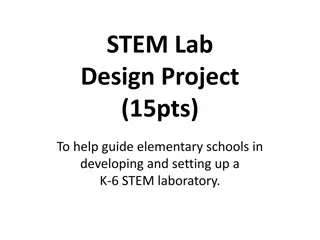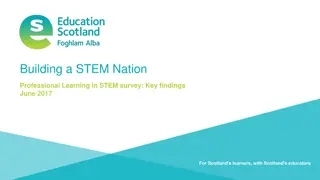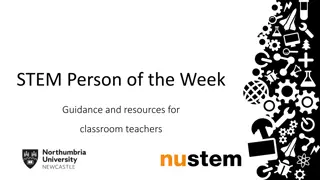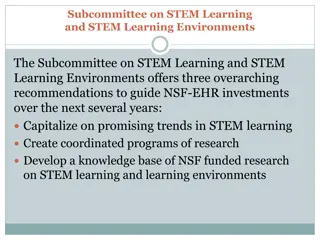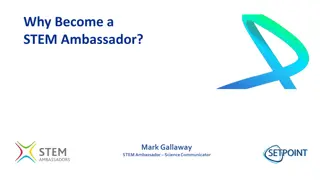Exploring STEM Mobile App Programming in Education
Explore the methodology of teaching mobile app programming in formal and informal education settings through the use of STEM applications and mobile devices. Learn about the creation of useful apps, leveraging the functionalities of mobile devices, and integrating real data processing for educational purposes.
Download Presentation

Please find below an Image/Link to download the presentation.
The content on the website is provided AS IS for your information and personal use only. It may not be sold, licensed, or shared on other websites without obtaining consent from the author. Download presentation by click this link. If you encounter any issues during the download, it is possible that the publisher has removed the file from their server.
E N D
Presentation Transcript
Programming of STEM mobile applications in formal and informal education ubom r najder J n Guni P. J. af rik University in Ko ice, Faculty of Science, Slovakia Scientix seminar, P. J. af rik University in Ko ice October 5, 2015
Content Methodology of teaching of mobile applications programming in AI2 Programming of STEM applications Using mobile devices in education Data logger for the city traffic Pedometer or physical activities counter Suggestions for further projects Conclusions
Methodology of teaching of mobile applications programming in AI2 sources: Constructionism + Inquiry Based Learning inspiration: Build Conceptualize Customize Create (Wolber s model of teaching) main attributes of our methodology: creation useful apps exploiting spec functionalities of MD (touch, sensors, MM, speech, phone, SMS, run other apps) first introduce sensors, then program constructions pupils follow worksheets with formative assessment rapid app creation -> extension to (STEM) project support for teachers (methodologies, training)
Using mobile devices in education Communication Multimedia Games, leisure ... Data processing: spreadsheet -> spreadsheet on a cloud, MD fictive data -> real data data from external sources -> original and authentic data not only process data -> obtain data + process data using sensors of MD
Data logger for the city traffic (1) motivation real, original data for spreadsheet, mobile devices, GPS module data stored directly in electronic form, research problem traffic in the city traffic density typical STEM project Programmer problem to create mobile application Scientific problem to process data statistically
Data logger for the city traffic (2) Problem analyses What type of data is recorded and how to record data? Which data can be obtained automatically and which require the decision of man? What is the format of recorded data? Where will be the data stored? What functionality and interface should the application have? Which environment (language) will be used to create the application? (We assume AI2) Which previous decisions can we implement within the given environment? How to modify those we cannot implement?
Data logger for the city traffic (3) Possible answers automatically / decision researcher data value place of measuring time of measuring direction of car GPS receiver automatically system time automatically in city, out of city decision researcher passenger car, public transport or freight transport type of transport decision researcher Programming environment MIT App Inventor 2 Data will be stored in the local CSV file
Data logger for the city traffic (4) Part of program code
Data logger for the city traffic (5) Programming is beauty because each product provides a room for improvement. Problem 1: We do not have feedback when a button is pressed. solution: short vibration Problem 2: Which button was pressed? solution: View just stored data in label component Problems: UNDO action, reset data, data from more observers
Pedometer / phys. activities counter (IBL, requirements-means) guided inquiry (problem, methods, result) requirements for mobile app (problem) > means (AI2): what sensors are suitable for recording of movement speed changes (apps from Google Play) identify movement speed changes (accelerometer components, AI2 cmds) display value of accelerometer sensor (write/draw cmds) steps counting (calculation, testing cmds) keep measured data (store to/read from file cmds)
Pedometer / phys. activities counter (sequence of questions) How much the values of various sensors of MD in the same situations differ? What trends have the components of acceleration measured by the sensor during walking? How much do they differ for different types of gait and a variety of people? Which of the components of acceleration will be taken into account? At what place and in what position we should fasten the mobile device to the human body to obtain the most accurate values from mobile application to measure the number of steps?
Pedometer / phys. activities counter (sequence of questions 2) Which algorithm should we use to calculate the steps? We calculate the steps immediately, or from recorded values? What other functionalities should the mobile application have? What other useful applications can be derived from this pedometer application?
Pedometer / phys. activities counter (methodology) Determining what sensors are on our MD and how they react on changing the speed of movement (accelerometer sensor is a winner) Programming mobile app (in AI2) for displaying actual value of acceleration sensor (z-component)
Pedometer / phys. activities counter (methodology 2) Experimenting with our and other ready-made apps during walking (periodic course of accelerometer sensor). Number of steps = number of passes through the certain threshold.
Pedometer / phys. activities counter (methodology 3) key part of program code with absolute value of the acceleration vector ?? 2+ ?? 2+ ??2
Pedometer / phys. activities counter (methodology 4) Adding other features: setting sensitivity threshold of the pedometer recording (and displaying) of measured data to a text file delay before measuring http://ai2.appinventor.mit.edu/?galleryId=6283550952259584
Pedometer / phys. activities counter (methodology 5) Creation of other apps based on pedometer: counting of squats determine the pace of selected training exercises diagnosing of pathological shakiness, or lameness
Suggestions for further projects Multimedia notepad for young journalists (taking photos with recorded date, time, GPS position, personal notes and additional drawings). Talking compass for visually impaired persons (orientation sensor, speech synthesis) SMS loud reader for visually impaired or very busy persons (using speech synthesis, receiving SMS) Detector of falls for seniors (sending SMS to specified person with recorded information about GPS position, orientation and time of a fall)
Suggestions for further projects 2 Treasure hunting game (GPS sensor, orientation sensor, barcode reader).
Conclusions examples of meaningful integration of MD into educ. exploiting and creation own mobile apps pupils programming, STEM, inquiry skills, creativity (formal educ., IT ring/camp) prepared (future) teachers methodologies, training future plans development methodologies, writing book for pupils on programming in AI2 supported by the Slovak Research and Development Agency under the contract no. APVV-0715-12 Research on the efficiency of innovative teaching methods in mathematics, physics and informatics education.
Contacts RNDr. ubom r NAJDER, PhD. lubomir.snajder@upjs.sk PaedDr. J n Guni , PhD. jan.gunis@upjs.sk Pavol Jozef af rik University in Ko ice Faculty of Science Institute of Computer Science Park Angelinum 9, 041 54 Ko ice Phone (office): 00421 55 234 2539 GPS: 48.728888 N, 21.248232 E





